
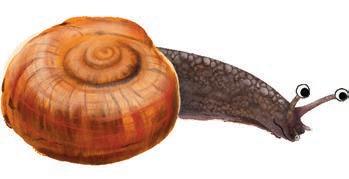



1 Write these numbers on the numeral expanders.
a 17 329
b 80 154
c 64 078
d 49 461
e 28 935
2 Expand each number by place value.
a 51 3 45 =
b 40 772 =
c 87 024 =
d 17 316 =
e 55 555 =
f 101 220 =

1 Round up or down to the nearest 10. a 73 b 28 c 1364 d 62 147
2 Round up or down to the nearest 100. a 591 b 16 03 c 21 977
3 Round up or down to the nearest 1000. a 6 099 b 24 270 c 93 8 04
4 Round up or down to the nearest 10 000. a 19 878 b 41 9 97 c 83 025
5 Round up or down to the nearest 100 000.
6 Write each number on the place value chart.
a 1 hundred thousand, 4 ten thousands, 44 hundreds and 2 tens.
b 120 hundreds and 81 ones.
c 61 thousands, 45 tens and 8 ones.
d 402 thousands, 32 tens and 5 ones.
e 49 thousands and 6 ones.
7 Rewrite the numbers from question 6 from smallest to largest.
Split method
For larger numbers, it can be easier to add the smaller place value columns first.
36 47 + 2428 = (7+ 40 + 600 + 3000) + (8 + 20 + 400 + 2000)
= 7 + 8 + 40 + 20 + 600 + 400 + 3000 + 2000
= 15 + 6 0 + 1000 + 5000 = 6 075

When using a vertical algorithm, you add the smaller place value columns first, too!
1 Solve using the split method, starting with the ones. a 2376 + 5162
b 628 4 + 8 415
1 Use the split method, starting with the ones.
a 4935 + 1742
b 13 428 + 32 517
c 25 019 + 28 746
d 44 754 + 35 632
When using vertical addition, you have to regroup if the total of a place value column is more than 10.
2 Now add the tens.
Guided practice Vertical addition
3 tens + 4 tens = 7 tens.
We also need to add the regrouped ten, so we end up with 8 tens. 1
1 Start with the ones. 7 + 5 = 12
Regroup the 12 for 1 ten and 2 ones.

1 Solve using regrouping in the ones column. a TO
2 Solve using regrouping in the tens column.
What would you need to do if the total in the tens column was 14?
3
Remember to place the numbers in their correct place value columns.
1 Rewrite as vertical addition and solve. a 6379 + 2115 b 3426 + 4832 c 17 245 + 24 531
30 8 56 + 23 933

Every student in Year 5M has a vlog page. Here is a list of the most visited pages.
1 Use a method of your choice to find the total page hits for:
a Alice and Patrick.
b Rui and Frank.
c Vaheni and Bronte.
d Rui, Torey and Sara.
e all the students with fewer than 10 000 page hits.
f all the students with more than 40 000 page hits.
2 Rewrite as vertical addition and solve.
a 28 476 + 9214
b 842 + 13 125 + 4702
Split method
You can use the split strategy by splitting the number you are subtracting by place value.

practice
1 Solve using the split method.
Write down the answer after each stage of the equation if it helps you.
1 Here is another way to set out the split method that works well for larger numbers.
3782 – 24 31 = 3782 – 2000 = 1782
– 4 00 = 1382
– 3 0 = 1352
– 1 = 1351
Solve using this method.
Would the answer be the same if you subtracted the ones first?

In vertical subtraction, you have to regroup when the number you are subtracting is bigger than the number you are taking away from.
2 Now subtract the tens. We regroup 1 ten from the fir st number to the ones. That leaves:
1
1 Start with the ones. You can’t do 3 – 6. Regroup 1 ten from the tens column for 10 ones. 13 ones – 6 ones = 7 ones
What would you do if there was a zero in the column that you needed to regroup from?

2
3
1 Rewrite as vertical subtraction and solve. a 75 8 − 392
Sometimes, you have to regroup from 2 columns in the same equation.
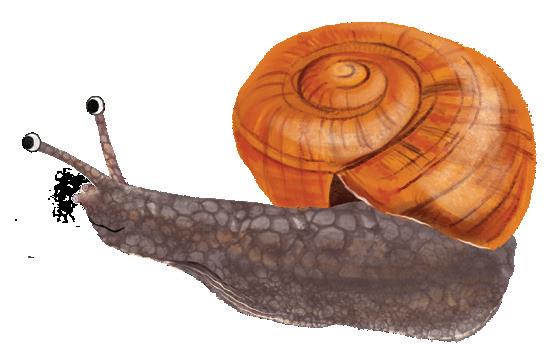

1 Yann plans to ride 30 000 km around Australia to raise money for charity.
a Use a written subtraction method to work out how much further he has to go after each stop.
Route
1
Brisbane to Sydney 922 km
2–3 Sydney to Melbourne to Adelaide 2526 km
4–6 Adelaide to Perth 5223 km
7–9
Perth to Broome 7463 km
10–17 Broome to Darwin to Alice Springs to Kalgoorlie 12 740 km
18–22 Kalgoorlie to Canberra
23–26 Canberra to Cooktown
925 km
755 km
27–34 Cooktown to Hobart 22 747 km
b Yann is aiming to raise $85 000. Complete the table to show how much he has left to raise after each day.
471
$65 023
$76 914
c Yann receives a large donation at the end of his ride and ends up raising a total of $123 564. How much over his target does he raise?
d How much more does Yann have to raise if he wants to meet a target of $150 000?
Multiplication and division are related.
This array shows that 3 × 5 = 15. It also shows that 15 ÷ 5 = 3.
Can you think of another multiplication and division fact that this array shows?

Guided practice





















































































1 Write one multiplication fact and one division fact for each array.
Multiplying by ten is easy – but you don’t just add a zero. The digits move one place bigger.
41 140 14 × 10 = ?
2 Complete the grid.
3 When you multiply by 100, the digits move two places to the left.
For example, what is 9 x 100?
Multiply by 100. a 7 b 12 c 15
1 Number patterns
c an help you to learn multiplication facts.
a Circle all the numbers counting by 6 to 100.
b Look at the last digit of each number. Write the 6s counting pattern.
c Use this to complete the 6 times table facts.
d Highlight all the numbers counting by 9 to 100 on the chart.
e Look at the last digit of each number. Write the 9s counting pattern.
f Use this to complete the 9 times table facts.
=
g What are the next 3 numbers, counting by 9 from 90?
h What are the next 3 numbers, counting by 6 from 60?








































a Use the array to help you complete the 4 times table facts.
1 × 4 = 2 × 4 = 3 × 4 = 4 × 4 = 5 × 4 =
6 × 4 = 7 × 4 = 8 × 4 = 9 × 4 = 10 × 4 =
b Write a turnaround fact for each 4 times table fact.
4 × 1 = 4 × 2 =
c Complete the matching division facts for each 4 times table fact.
3 Use a mental method to multiply by 10 and by 100.
1 Mia’s cupcake trays hold 9 cupcakes each. How many cupcakes can fit on:
a 4 trays? b 40 trays?
c 7 trays? d 17 trays?

2 This array shows that 2 × 2 = 4. It makes a square pattern. We call 4 a square number. On a separate piece of paper, write the heading “Square numbers”. Draw arrays for other square numbers. Write the square number next to each array.
3 A football factory makes boxes that hold 4, 6, 7 or 9 footballs. Circle the box sizes that could be used to pack exactly:
a 63 footballs.

b 48 footballs.

4 You will need a calculator for this question.
a Press 2 + 2 = on your calculator and leave the answer on the screen. The answer is: Press = again. Leave the answer on the screen. The answer is: What will happen if you keep pressing = ?
b How would it change if the problem were 2 × 2?
Long multiplication
Long multiplication is a method for multiplying larger numbers.
4 × 53 = ?
2 Now multiply the tens.
4 groups of 5 tens or 4 × 50 = 200
Write the tens answer beneath the ones answer.
3 To get the final answer, add 12 to 200.
So, 4 × 53 = 212 .
The result of multiplying two or more numbers is called the product.
1 Solve using long multiplication.
1 Start with the ones.
4 groups of 3 ones or 4 × 3 = 12
Write 12 on the first answer line.
Long multiplication works the same way as the split method or the grid method. You multiply by each place value column in turn.
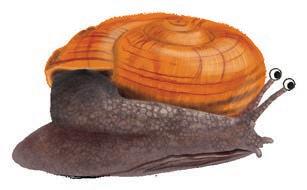
1 Rewrite as long multiplication and solve.
a 5 × 28 b 6 × 43 c 9 × 67 d 7 × 66
8 × 34
6 × 89
g Payal earned $74 a week for 7 weeks. How much does she have? h Tyler rode 35 km a day for 8 days. How far did he go?
Short multiplication
Short multiplication is a shorter way to multiply larger numbers.
4 × 53 = ?
2 Now multiply the tens.
4 groups of 5 tens or 4 × 50 = 200.
Also, add the regrouped ten to end up with 21 tens, or 210. So, 4 × 53 = 212.
1 Solve using short multiplication.
2 Solve using extended and then short multiplication.
1 Start with the ones.
4 groups of 3 ones or 4 × 3 = 12 .
Regroup the 12 for 1 ten and 2 ones and record the numbers in their place value columns.
This method is similar to the addition vertical algorithm. Start at the ones and work left.

1 Rewrite as short multiplication and solve. a 4 × 32
7 × 41
6 × 54
8 × 68
9 × 46
5 × 152
g Antony bought 9 boxes of marbles with 47 in each. How many does he have altogether?
h Namrita bought 8 games that each cost $109. How much did she spend?
2 Match the equations with their answers.
The ten trick
When you are multiplying by a multiple of 10, put a zero in the ones place.
In the ten trick, everything moves over one place. × 31 2 0 6 2 0 Just multiply × 2.
3 Use the ten trick to multiply the numbers.
a 14 × 10
b 16 × 20 c 23 × 30
Multiplying by 2-digit numbers
14 × 23 = ?
1 Split the numbers you are multiplying.
14 × 23
= (14 × 3) + (14 × 20)
2 Multiply.
3 Add the two answers to find the total. ×
4 Split, multiply and add the numbers.
12 × 35
1 Use a multiplication method of your choice to solve. Show your working.
a Farmer Sam grew 48 carrots. Farmer Fred grew 6 times as many. How many carrots did Farmer Fred grow?
Working-out space
b Farmer Sue harvested 32 carrots a day for 9 days. How many carrots did she harvest altogether?
Working-out space
c Which farmer had more – Fred or Sue?
2 Carlos was having 78 people to his party, including himself. Work out how many of each item he needs.
3 What if Carlos had 178 people, including himself? How many of each item would he need?
You can set out division problems like 64 ÷ 4 using this symbol: 4 6 4
2 Write the 1 on the answer line above the tens and regroup the 2 tens left over to the ones column.
1 Start with the biggest place value column.
6 (tens) divided by 4 is 1 (ten) with 2 (tens) left over.
4 Write the 6 on the answer line above the ones. So, 64 ÷ 4 = 16.
1 Solve the equations without regrouping.
3 Now divide the ones by 4 24 (ones) divided by 4 is 6.
For division, set the sum out this way, and start from the left and work your way right.

2 Solve the equations with regrouping.
1 Rewrite and solve.
a 87 ÷ 3 b 98 ÷ 2 c 88 ÷ 8
d 84 ÷ 7 e 78 ÷ 3 f 95 ÷ 5
2 Solve and rewrite.
a 6 7 2 b 5 8 0 c 4 7 6
d 4 6 8 e 7 9 8 f 3 8 1
Sometimes, the number you are dividing will not split equally. When this happens, you have a remainder. This can be shown using “r” for the remainder. For example, 27 ÷ 4 = 6 r 3.
4 2 7 6 r 3
3 Solve the division problems. Use “r” to show the remainder.
a 37 ÷ 3 b 57 ÷ 6 c 86 ÷ 4 d 77 ÷ 5
4
Solve using a division method.
a 84 s tudents were staying in rooms of 3 on their school trip. How many rooms did they need?
Working-out space
b 95 sheep were divided equally into 5 pens. How many were in each?
Working-out space
c Te Aroha divided her 96 football cards into 4 equal piles. How many cards in each?
Working-out space
d How many cards in each pile if Te Aroha divided them into 3 equal piles?
Working-out space
e 78 people in the audience sat in rows of 6. How many rows were there?
Working-out space
f Could the 78 people sit in rows of exactly 7? Why or why not?
Working-out space
1 Circle the numbers that can be divided exactly by:
Remember to start from the left and write the answers above the correct place value columns.
2 Calculate the answers. Use remainders if needed.

3 Rewrite and solve.
a Melinda was sharing 336 lollies into 6 bags. How many went in each?
b Melinda realised she forgot to make a lolly bag for herself. How many in each bag if she makes up another one?
Guided practice
1 Label each pair of equivalent fractions.
Which fraction is the easiest to visualise?

1 Use the fraction wall to find equivalent fractions for:
2 Write the fractions in order from smallest to largest.
It is easier to read fractions when they are in their simplest form.
Is there an equivalent fraction simpler than 1 2 ?

3 Circle the equivalent fraction in its simplest form.
or 2 4
4 Write each fraction in its simplest form. Use the fraction wall on the previous page to help you.
5 Write the simplest equivalent fraction for each diagram. Divide and shade the shapes to match.
This grid has 100 squares.
a Colour 10 squares and write the fraction with 100 as the denominator.
b What is the equivalent fraction in tenths?
2 Look at the grid in question 1. How many squares would you c olour for:
3 Write an equivalent hundredths fraction for:
4
We can add or subtract fractions with the same denominator.
If the total comes to more than one whole, we use an improper fraction ( 6 4 ) or a mixed number (1 1 2 ).
It works the same way for subtraction.

1 Write the answer as an improper fraction and as a mixed number.
1 Write the answer as an improper fraction and as a mixed number.
2 Fill in the gaps.
We can use division to find the fraction of a group.
1 2 of 12 is the same as 12 ÷ 2.
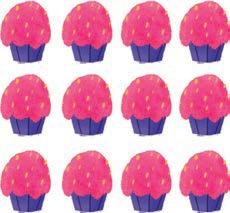
3 Circle the fractions. Complete the division number sentences. a 1 3 of 12 b 1 12 of 12 c 1 4 of 12



4 Use the diagrams above to help you answer the questions.
a What is 2 3 of 12? b What is 2 12 of 12? c What is 2 4 of 12?
5 Write these fractions as a division number sentence. For example, 1 4 of 20 is 20 ÷ 4 = 5. a 1 5 of 50 b 1 3 of 18 c 1 8 of 8 d 1 10 of 100 e 1 6 of 42
1 Write the missing mixed numbers and improper fractions on the number lines.
2 Use the number lines to help you add and subtract the fractions.
3 Use multiplication facts to find the fractions of the group.
You can write 1 10 as a decimal: 0.1 You can write 1 100 as a decimal: 0.01

1 Shade the grids and write each tenths fraction as a decimal.
2 Shade the grids and write each hundredths fraction as a decimal.
3 Create decimals of the fractions above using division.
1 Write the numbers on the numeral expanders as a decimal and a fraction or mixed number. Rank the numbers from smallest (1) to largest (4).
2 Write the numbers on the place value chart.
Thirty-six and four tenths
Five hundreds and twenty-two hundredths
Two hundred and twentytwo and twenty-two hundredths
3
Add the tenths.
0.1 + 0.2 =
5 Add the tenths and hundredths. +
0.3 + 0.08 =
7 Add and subtract the decimals.
4 Add the hundredths. + 0.04 + 0.05 =
6 Add the tenths and hundredths. +
0.01 + 0.1 =
8
Round the tenths to the nearest whole number.
You can add or subtract decimals just like you do with whole numbers:
Use estimating and rounding to check your answers.
Round 3.14 down to 3. Round 1.73 up to 2.
3 + 2 = 5, so your answer will be close to 5.
But if there is a different number of columns, it is important to line up the numbers according to their place value:
Round 23.17 to 23. Round 59.7 to 60. 23 + 60 = 83, so the answer will be close to 83.
The decimal point doesn’t make much difference to the way you work, but it makes a BIG difference to the answer.

9 Add and subtract the decimals.
1 Use the hundred grid to help you circle the bigger number in each pair.
a 0.9 or 0.09
b 0.18 or 0.3
c 0.25 or 0.52
d 9.8 or 0.99
e 0.5 or 0.05
f 0.41 or 0.39
g 0.78 or 0.87
h 1 or 0.1
2 Mr Hoyne’s class had a long-jump competition. Re-order the results from shortest to longest jump. Then round each jump length to the nearest whole number.
Mata 3.26 m
Tai 4.07 m
James 5.21 m
Elara 4.7 m
Lily 4.28 m
Junior 3.9 m
To give change in cash, businesses round to the nearest 10 cents. Change from $10



Would you get any change from $10 if the pen cost $9.99? Why not?
$9.91 rounds down to $9.90, so you would get 10c change.
$9.97 rounds up to $10, so you would not get any change.
1 Complete the table.

2 List the change you might receive if you paid each price in cash.








1
a How much change would you get from $5 for:
b How much change would you get from $10 for:
2 Choose 3 items from above.
a Calculate the total cost. b Round the total to the nearest 10c.
c How much change would you get from $20?
d How much change would you get from $100?
3 Ava used $20 to buy a video game priced at $14.49.
a What was her change if she received 4 coins?
b What was her change if she received 6 coins?
4
Rounding amounts to the nearest dollar helps us to quickly estimate totals.
Actual amounts: $19.99 + $26.32 + $131.78
Amounts rounded to nearest dollar: $20 + $26 + $132
Which amounts are

Round the amounts to the nearest dollar, then calculate to get an estimated total for pizza and dessert at La Dolce Slice.
+ $9.45
$14.32 + $9.98
$24.87 + $8.23
5
Calculate the actual total and change for the amounts above.

a $29.66 + $9.45 = Change from :


b $14.32 + $9.98 = Change from :


c $24.87 + $8.23 = Change from :
6 You have $60 to spend at La Dolce Slice. Choose the items you want to order.
a Es timate then calculate the cost of your order.
Pepperoni: Ham and pineapple: $24.87
Vegetarian: $22.28
Cheese and garlic: $14.32
Panna Cotta: $9.98
$9.45
Tiramisu: Gelato: Desserts $29.66
$8.23
b Estimated total:
c Ac tual total:
d Change:

Use a calculator to work out which 2 books together would give you:
a no change from $20.
b $1.10 change from $20.
c $1.50 change from $20.
d $23 change from $50.
e $22.90 change from $50.
2 Scott used $20 to buy a book and received $2 change. List the ten possible prices of the book.
3 Hine bought three native trees from the nursery. They cost $45.65, $ 65.12 and $31.33. Estimate, then calculate how much Hine spent.
4 What is the difference between the estimated cost and actual cost of Hine’s plants?

1






3
A multiple is the result of multiplying one number by another. The numbers 4, 6, 8 and 10 are multiples of 2.
a Circle all the multiples of 2 on the hundred chart.
b Shade the multiples of 4.
c Which numbers are both circled and shaded?
d Tick the multiples of 8.
e How many of the ticked numbers are also circled and shaded?

4
a Circle all the multiples of 5.
b Shade all the multiples of 2.
c What do you notice about numbers that are multiples of both 2 and 5?
d Which of those numbers are also multiples of 10? What do you notice about all the multiples of 2 and 4?
A factor is a number that will divide evenly into another number. The factors of 4 are 1, 2 and 4.
5 Use the arrays or counters to help you find the factors of 6, 7 and 8.
a Factors of 6: , , and .
b Factors of 7: and .
c Factors of 8: , , and .
We list factors in ascending (smallest to biggest) order.

6 What patterns can you see with the factors of each number?
7 How many factors do you think 3 and 5 have? Why?
1 Write the rule and complete the pattern.
2 Complete each function machine by creating your own rule and matching inputs and outputs.


3 Why are there more factors for 10 than there are for 7?
4 a Write the first 10 multiples of 7.
b Which of these are also multiples of 2? c Which are also multiples of 5? d Which are also multiples of 3?
In addition number sentences, you can add the numbers in any order and the answer will stay the same.
2 + 3 = 5
3 + 2 = 5
Guided practice
1 Are these statements true or false? Addition
Is this true for multiplication, subtraction and division?

a 2 + 6 has the same answer as 6 + 2. True False
b 12 + 8 has the same answer as 8 + 12. True False
Subtraction
c 10 – 2 has the same answer as 2 – 10. True False
d 9 – 8 has the same answer as 8 – 9. True False
Multiplication
e 8 × 5 has the same answer as 5 × 8. True False
f 10 × 7 has the same answer as 7 × 10. True False Division
g 30 ÷ 3 has the same answer as 3 ÷ 30. True False
h 12 ÷ 4 has the same answer as 4 ÷ 12. True False
2 Complete the statements to show your findings.
a If you change the order of numbers in and number sentences, the answer stays the same.
b If you change the order of numbers in and number sentences, the answer does not stay the same.
1 Complete the number sentences.
a 4 + 5 = 5 + 4 =
b 4 × 5 = 5 × 4 =
c 16 + 9 = 9 + 16 = d 10 × 5 = 5 × 10 =
e 12 + 21 = 21 + 12 = f 4 × 6 = 6 × 4 =
g 100 + 13 = 13 + 100 = h 3 × 100 = 100 × 3 =
2 Circle the number sentence in each pair that is easier to solve in your head.
a 9 + 21 or 21 + 9
c 13 + 7 or 7 + 13
b 4 × 11 or 11 × 4
d 10 × 8 or 8 × 10
e 110 + 18 or 18 + 110 f 12 × 100 or 100 × 12
g 34 3 + 7 or 7 + 343 h 250 × 4 or 4 × 250
3 What patterns can you see with the number sentences that are easier to solve?
4 Rewrite the number sentences in an order that is easier to solve, then solve.
a 61 + 4 + 9 = ?
b 200 + 13 + 200 = ?
c 10 × 2 × 3 = ?
25 × 3 × 4 = ?
5 Complete the tables.
a Addition and subtraction are connected. Show how one “undoes” the other.
10 + 2 = 12 12 – 2 = 34 + 16 = 8 + 11 = 102 + 38 =
b Multiplication and division are connected. Show how one “undoes” the other.
3 × 5 = 15 ÷ 5 =
4 × 6 = 10 × 9 = 12 × 8 =
6 True or false?
a 60 – 19 = 38 + 3
b 13 + 33 + 4 = 5 × 5 × 2
c 100 – 50 – 10 = 60 ÷ 3
d 50 ÷ 5 = 3 + 3 + 3
e 150 ÷ 3 + 6 = 2 × 4 × 7
f 35 – 10 + 5 = 60 ÷ 4
7 Complete the number sentences.
False
False
False
False
False
False
a 10 0 + 10 + = 111 b 5 × 5 × = 125
c 45 – 3 + = 54
e 2 × 9 + = 36
470 + 53 – = 503
6 ÷ 3 + = 10
1 Write number sentences to solve the word problems.
a Anna is organising a charity event. She has 4 tables, and each table can seat 8 people. If she adds 13 additional chairs for guests, how many people can be seated in total?
b Obi baked 24 chocolate-chip cookies and 44 Anzac cookies for a party. He eats 13 cookies before the party. How many cookies does Obi have left?
c There are 6 classes going on a field trip. Each class has 10 students. If each student brings 2 snacks, how many snacks will there be in total?
d Savannah has 30 friendship bracelets. She gives 10 to her sister and then shares the rest of the bracelets between 5 friends. How many bracelets does each friend get?
2 Write number sentences to prove the following statements.
a The answer remains the same if you change the order of numbers in addition.
b The answer remains the same if you change the order of numbers in multiplication.
c Addition and subtraction are related. One “undoes” the other.
d Multiplication and division are related. One “undoes” the other.
When this number is subtracted from 30, the answer is the same as 16 plus 7. What is the number?
To solve a word problem:
1 Change the word problem 30 – = 16 + 7 into a number sentence.
2 Then complete the calculation. 30 – = 23 The answer is 7.
1 Change to number sentences and solve. a
Which words tell you the operation you need to use to solve the problem?

When this number is added to 15, the answer is the same as 48 minus 12. What is the number?
Number sentence: 15 + = 48 – 12 Answer:
When this number is added to 42, the answer is the same as 31 plus 27. What is the number?
Number sentence: 42 + = Answer:
When this number is subtracted from 73, the answer is the same as 26 + 23. What is the number?
Number sentence: Answer:
1 Write number sentences to solve.
a What number subtracted from 100 gives the same answer as 31 added to 27?
b What number added to 56 gives the same answer as 108 minus 21?
c When this number is added to 98, the answer is the same as 200 minus 72. What is the number?
d There were 43 boys and 54 girls at a party. 72 guests chose pizza; the rest had burgers. How many had burgers?
e Of the total guests in question d, 18 left to play soccer. Of those still there, 61 had cake while others didn’t. How many didn’t have cake?
2 Fill in the gaps to complete the number sentences.
a + 17 = 32
c – 23 = 61
e × 8 = 48
b 58 – = 44
d 35 + = 89
f 7 × = 56
g 63 ÷ = 9 h ÷ 5 = 11
i 26 + 3 4 = 100 –
78 – 4 6 = 19 +
3
Write number sentences to solve.
a Jeremy had 12 boxes with 6 eggs in each. How many eggs in total?
b Sc arlet wrote a poem of 8 lines with 9 words in each line. How many words altogether?
Can you think of more than one way to solve each problem?
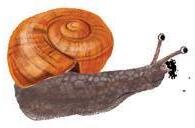
c Ben c ollected 15 football cards. Cruz has 6 times more cards than Ben. How many cards does Cruz have?
d Each classroom shelf holds 7 books. If the teacher puts 49 books away, how many shelves has he filled?
e The chef made 54 grams of meringue mix. How many meringues can she make if each one uses 6 grams of the mix?
f Maggie completes 28 pieces of a puzzle on Sunday and 32 on Monday. She still has 10 times as many pieces left. How many pieces has she got to go?
4 Write your own word problem for:
a 110 ÷ 11 = 10
b 6 × 32 = 192
1 Li has a total of 106 green, red and blue marbles. How many of each c olour might he have? Show 3 different options.
Option 1
Option 2
Option 3
2 Marley has 48 lollies. Show different ways she could share them equally with her friends.
Working-out space
3 Enrica has $75. Show some different combinations of notes and c oins that she could have.
Working-out space
10 millimetres = 1 centimetre
100 centimetres = 1 metre

10 mm = 1 cm 100 cm = 1 m
1 Find the length of each worm in mm.



Use your hands to show about how big a metre is in real life.
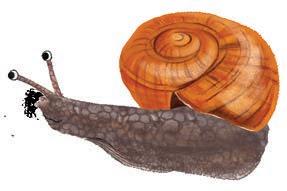

2 Use the worms in question 1 to work out:
a how much longer b is than a.
b how much longer c is than d.
c the combined length of b and c.
3 Find the length of each fern in cm.



1 Would you use mm, cm or m to measure these items in real life?




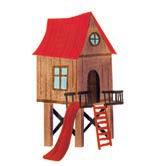

2 Would you use a 15 cm ruler, 1 m ruler or 10 m measuring tape to measure the items from question 1 in real life?
3 Convert each length into the different units of measurement and complete the table.
4
Estimate which shape in question 6 below has the greatest perimeter.
5 Find the perimeter of each shape in cm.
6 Find the perimeter of each shape in mm.
Perimeter is the total distance around the outside of a 2D shape

1
a Choose 2 objects in the classroom that you would measure in mm. Record them below.
b Es timate the length of each object.
c Measure and record the actual lengths.
d Calculate the difference between your estimate and the actual length.
e Repeat for cm and m.
f Which of your items was the longest?
g Which of your items was the shortest?
h What is the difference between the lengths of the two items you measured in mm?
i What is the difference between the lengths of the two items you measured in cm?
j What is the difference between the lengths of the two items you measured in m?
k What is the difference between the lengths of your longest item and your shortest item?
Square centimetres are used to measure smaller areas.

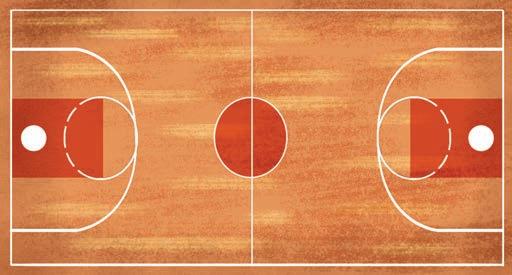
Square metres are used to measure larger areas. Area = 420 m2
Does the book or the basketball court have the greater area?
1 Match the items with their likely areas in real life.


1 Circle the unit you would use to measure the area of each item or place in real life.



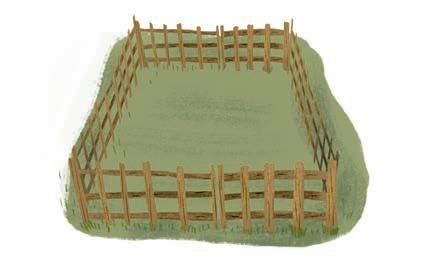
2 Use the grid to draw 4 different shapes with an area of 8 cm2.
3
Record the area of each shape in cm2.
4 Choose 2 places in your school that you could measure in square metres.
a Es timate the area of each place.
b Measure and record the actual area.
Place Estimated area Actual area
1 A quick way to find the area of a rectangle is to multiply the length by the width.
Find the area of each rectangle.
2 Draw a shape that:
a is 4 cm wide and has an area of 12 cm2. b has an area of 16 cm2 and one side that is 5 cm long.


Guided practice
1 Write the volume of each shape in cm3 .

2 Which has the greatest volume?
3 Colour the containers to show:


4 Which container has the smallest capacity?

1 a Make and draw a cube with a volume of 8 cm3 .
b How many layers?
c How many cm3 in each layer?
2 a Make and draw a cube with a volume of 27 cm3 .
b How many layers?
c How many cm3 in each layer?
3 a Make and draw a 3D shape with a volume of 24 cm3, with the same number of cubes in each layer.
b How many layers?
c How many cm3 in each layer?
4 Match the measuring jugs with the containers that filled them.


Estimate the capacity of your drink bottle in millilitres, then fill it to measure it. Which item below has the closest capacity to your drink bottle?
5 Match each measuring jug with the item you think filled it.








6 a Which of the containers in question 5 have a capacity of less than 1 litre?
b What is the capacity of the largest container?
c How much larger is the capacity of the largest container than the smallest?
1 Each of these jugs had 1 litre of water in it before the rock was put in.
Order the rocks from smallest to largest, based on the water they have displaced.

Smallest volume Largest volume
2 Rewrite as millilitres and litres.
a 14 00 mL = litre millilitres
b 2500 mL = litres millilitres
c 38 59 mL =
d 76 43 mL =
3 Rewrite in millilitres.
a 3 litres 25 millilitres = mL
b 5 litres 340 millilitres = mL
c 7 litres 654 millilitres = mL
d 19 litres 999 millilitres = mL

Mass = 1.25 kg or 1 kg and 250 g

Mass = 1 2 kg or 500 g
Which of the 2 items has the smaller mass?
1 Write the mass of each item in two ways.







1 You will need a set of scales.
a Choose an item from the classroom for each category in the table below.
b Es timate the mass of each item.
c Use a scale to find the actual mass.
d Find the difference between your estimate and the actual mass. CategoryItem
About 500 g
About 1 kg
About 2 kg
More than 2 kg
e Which of your items has the greatest mass?
f Which has the smallest mass?
g What is the difference between the mass of the heaviest and lightest items?
h What is the total mass of your items?
i Write the mass of your heaviest item in two different ways.
j Write the mass of your lightest item in two different ways.
2
Draw arrows on the scales to show the mass of each item.
a 3. 3 kg b 90 0 g c 1.6 kg


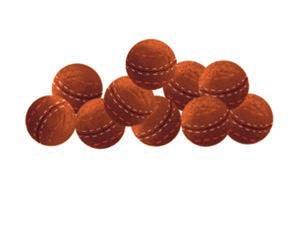
1 kg 200 g



How much heavier is the heaviest item than the lightest?

3 Use the scales in question 2 to work out the mass of:
a 1 phone book.
b 1 banana.
c 1 cricket ball.
d 1 cake.
e 1 pumpkin.
f 1 remote control.
1 Complete the table.
2 a Write each amount in grams.






b How much more is the mass of the eggs than the blueberries?
c What is the total mass of the food items?
d The recipe for blueberry muffins only needs 2 eggs. What is their mass?
Temperature
Temperature can be measured in degrees Celsius or °C.


Guided practice




Can you think of something warmer than the margarine but colder than the soup?
1 Record the temperature shown on each thermometer.

1 Mark the temperatures on the thermometers.
2
a Which temperature in question 1 is the highest?
b Which is the lowest?
c What is the difference between the highest and lowest temperatures?
d Which 2 temperatures have a difference of exactly 25°C?
e Which 2 temperatures have the smallest difference?
f Which temperature might be the maximum temperature for a winter’s day where you live?
g Which temperature might be the maximum temperature for a summer’s day where you live?
3 Circle the colder place or item in each pair.




Do you know what the temperature of the human body is?
4 Choose an adjective from the box below to describe each temperature.






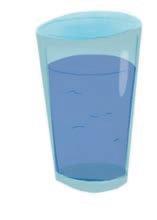


1 Match the items with their likely temperatures.

2
a Choose two places around school and record them in the table.
b Es timate the temperature of each place, then use a thermometer to find the actual temperature.
c Rank the 4 places from 1 (hottest) to 4 (coldest).
Classroom
Playground
d What is the difference in temperature between the coldest and the hottest place you measured?
e Imagine the forecast for today is 25°C. By how much is your classroom hotter or colder than the forecast?
f By how much is the playground hotter or colder than the forecast?
Unit 6: Topic 6
Time
To change minutes to seconds, multiply by 60.

To change hours to minutes, multiply by 60.
5 minutes = 5 × 60 = 300 seconds 10 hours = 10 × 60 = 600 minutes
1 How many:
a seconds in 1 minute?
How would you change minutes to hours?

b minutes in 1 hour?
c hours in 1 day? d days in 1 week?
e days in 1 year? f weeks in 1 year?
2 Fill in the gaps.
1 Below are the race times for six students from Year 5B.
a Complete the times in the table.
b Rank the students from fastest (1) to slowest (6).
Hana 1 min 10 seconds
2 Circle the longer duration in each pair.
a 3 weeks or 27 days
c 70 0 days or 2 years
e 3 days or 70 hours
g 3 1 2 hours or 200 minutes
3 How many:
a days in 5 weeks?
c seconds in 5 minutes?
e days in 2 years?
b 97 minutes or 2 hours
d 66 0 minutes or 10 1 2 hours
f 10 years or 4000 days
h 1 hour or 400 seconds
b minutes in 5 hours?
d months in 5 years?
f hours in 2 days?
4 We use am for times before midday and pm for times after midday. Write am or pm for each description.
a School starts at 9 . b School ends at 3:15 .
c Lunch is at 1 . d The mail arrived at 11 .
e I went to bed at 9:30 f An owl woke me up at 2
5 Rewrite the times in question 4 from earliest to latest in the day.
Earliest Latest
6 Match the times with the analog and digital clocks.
1 minute to 7 in the morning 26 past 8 in the evening 10 minutes past midnight 47 minutes past midday
7 Write as am or pm time.
a Maria’s piano lesson started at 3:30 pm and went for 1 hour and 15 minutes. What time did she finish?
b Sean has an appointment at 12:10 pm. It will take him 25 minutes to walk there. What time should he start walking? 12:10 am 6:59 am 12:47 pm 8:26 pm
1 Use the cinema timetable to answer the questions.
Marshmallow Attack 90 mins 10:00 am 1:35 pm 8:15 pm
My Mum the Plumber
83 mins 11:15 am 2:00 pm 9:00 pm
Cop Capers
92 mins 9:45 am 12:30 pm 7:20 pm
Cakes on a Train
76 mins 10:30 am 1:45 pm 6:40 pm
a What time does the morning session of Marshmallow Attack finish?
b How much longer is Cop Capers than Cakes on a Train?
c How much later is the evening session of Cop Capers than the morning session?
d Which movie will finish at 3:23 pm?
e What time does the afternoon session of Cakes on a Train end?
f Which movie is longer than 1 1 2 hours?
g Will the afternoon session of Marshmallow Attack or Cakes on a Train finish earlier?
h On the clocks below, show the start and finish times for the evening session of Cop Capers Start:
Both of these triangles are polygons.
A regular polygon has equal sides and equal angles.
1 Complete the table.
Equal sides are labelled with the same number of markings.

Parallel sides of shapes are labelled with the same number of arrows. Perpendicular sides are labelled with a square in the corner. It means the vertical and horizontal lines are making a 90° angle.
1 a Colour the shapes that have parallel lines.
b Label the parallel lines and perpendicular lines on the coloured shapes.
2 Read the shape riddles. Write the name of the shape that matches the description.
I have:
• 4 equal sides
• 4 equal angles
• 2 sets of parallel lines
• 4 right angles
I am a .
I have:
• 5 equal sides
• 5 equal angles
• no parallel lines
• no right angles
I am a . I have:
• 4 equal sides
• 2 sets of equal angles
• 2 sets of parallel lines
• no right angles
I am a .
3 a Complete the table.
b Which shape has the biggest area?
4 Draw a smaller and larger scaled version of each shape.
a Halve the number of squares on each side of the shape to get the smaller shape.
b Double the number of squares on each side of the shape to get the bigger shape.
c Record the areas of the shapes in the table.
Area of shape halved
Area of shape doubled
1
a Draw a regular shape with an area of 9 cm2
b Name your shape.
c What is the area of the hexagon?
d Is it regular or irregular?
e Divide the hexagon into 2 triangles and 1 rectangle.
f What is the area of each triangle?
a Draw three more polygons in the grid.
b Complete the table using your shapes from the grid above.
c Rank the polygons in order of smallest area (1) to largest area (4).
To draw prisms or pyramids:
1 Start with the base or bases.
2 Then draw lines to join the corners of the prism bases, or the pyramid point with the base corners.
What is the difference between a prism and a pyramid?

1 Join the corners to complete the prisms. Then name them. a b
2 Join the base corners to the point of the pyramids. Then name them. a b
1 Try drawing these shapes on your own.

2 Complete the top views, front views and side views of the shapes.

To see the front and side views, it helps to view the shape at eye level.
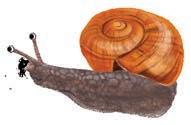
3
Label the top, front and side views of the shapes.
Draw top, front and side views.
5 Match the prisms to their nets.
6 Circle the net that does not make a cube.
7 A cross-section is what you see if you cut straight through a 3D shape. The cross-section of a sphere would be a circle.
Draw the cross-section of the 3D shapes.
1 Draw and name the 3D shapes with the properties described below. Description
2 rectangular bases
8 corners
12 edges
1 triangular base
4 corners
6 edges
2 hexagonal bases
12 corners
18 edges
2 Make two different 3D shapes using 8 cubes.
a Draw each shape.
b Show top, front and side views. Shape
straight angle (or 180°)
right angle (or 90°)
obtuse angle – larger than a right angle, smaller than a straight angle
reflex angle –larger than a straight angle
acute angle –smaller than a right angle revolution (or 360°)
Can you explain what a right angle is?

1 Circle the size of each angle and record its name.
greater / smaller than a right angle
greater / smaller than a straight angle
greater / smaller than a revolution
greater / smaller than a right angle
greater / smaller than a straight angle
greater / smaller than a revolution
1 Match the angle names with the pictures.

2 Use a known right angle (such as the corner of a book) to find and draw:
a 3 items with angles smaller than a right angle.
b 3 items with angles greater than a right angle. acute angle right angle obtuse angle straight angle reflex angle
3 Re-order the angles from smallest to greatest.

4 Name the angle types.
I know the corner of this book is a right angle. So I can tell that this angle is smaller than a right angle.

Sometimes, you can only see one arm of an angle and you have to imagine where the invisible arm is.

You can see the wall as one angle arm but the rebound angle is invisible.
1 Draw a line to show where the door handle could end up if it is turned to make: a an acute angle. b a right angle. c an obtuse angle.



2 Find, draw and classify 2 invisible arm angles in your classroom.
Type of angle:
Type of angle:
Hillcrest Showgrounds









The car park is about 40 metres long. There is one ATM. The horse pavilion is about 10 metres from the Grand Arena.
The scale tells you how big each cm on the map is in real life.
The arrows show you which direction is north, south, east and west.



1 Use the map to find:
a the length of the main stage.
b the number of toilets at the Hillcrest Showgrounds.
c where first aid is located.
d the width of the showgrounds.
2
a Draw and label a 10 m by 15 m picnic area below the animal nursery.
b How far is your picnic area from the car park?
c Add your own police symbol to the legend.
d Choose a place to draw your police symbol on the map.
e Describe where your police station is.
This is O’Brien’s Farm.
1 Using a scale of 1 cm = 5 m, draw and label:
a a paddock that is 30 m long and 20 m wide.
b a shed that is 10 m long and 5 m wide.
c a farmhouse that is 15 m wide and 20 m long.
d an orchard that is 15 m long and 10 m wide.
How will you decide where to place each item?

2 Create symbols in the legend and add the following items to the map.
a 5 trees b 2 water tanks c a windmill
d 7 cows e an arrow to show north
3 a Draw a track the length of the farm.
b How long is your track in metres?
4 If the scale was 1 cm = 10 m, what would be the dimensions of:
a the paddock? long and wide
b the shed? long and wide
c the farmhouse? wide and long











5 a About how long (in metres) is the Fun Run course?
b Describe where the course goes.


c Write directions from the city square to the sports stadium. 6 What is at:
8 Add east, south and west to the compass above.

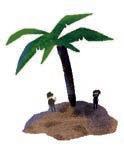




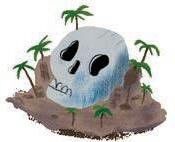

1 What is:
a west of Coconut Island?
b south-west of Skull Island?
c north-west of Coconut Island?
d north-east of Mystery Island?
2
a Draw the best way for the pirate ship to sail to the treasure at X.
b Describe the route using grid references.
c Add SE and NW to the compass. Then, describe the route using compass directions.
d Draw another way for the pirate ship to reach the treasure.
e Which route is longer? How can you tell?
Different survey questions give you different information.
Do you like cats?
That’s a yes/no question so I only have 2 answer options.

1
What do you think about cats?
That’s a more open question. I could give lots of different answers.
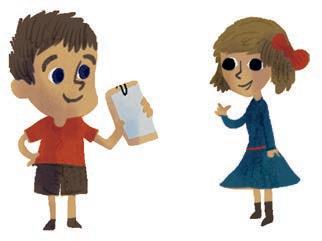
When is it useful to ask yes/no questions?

a Write a survey question about sport that has a yes/no answer.
b Ask 10 people your question and record the answers with tally marks. Yes No
2 a Write a question about sport that doesn’t give limited options.
b Ask 2 people your question and record their responses.
1 Tick the survey question that would be best to find out:
a how many people in your class like chocolate.
When did you last eat chocolate? What chocolate do you like?
What is your favourite dessert? Do you like chocolate?
b the most popular ice cream flavour.
Where do you buy ice cream? How popular is ice cream?
What is your favourite Do you like ice cream? ice cream flavour?
2 a Write a survey question with the following possible responses.
1 = dislike a lot 2 = dislike a bit 3 = not sure 4 = like a bit 5 = like a lot
b What do you think will be the most common response from your class?
c Ask 10 classmates your question and record their answers below. Response 12345
Number of people
d What was the most common response?
e Write a statement about how the results compared with what you expected.
f Compare and discuss your results with a classmate. Were your results different? Why?
3
Match the survey questions to the group of people you would survey to get the most accurate data.
How many children do you have living at home?
What is your favourite subject in school?
People with a driver’s licence
Have you ever had a speeding ticket?
School-aged children or teenagers Employees
What do you like most about your job?
Parents or adults
4 a Which survey question above has the most possible responses?
b Rewrite the survey question to limit the number of possible responses.
c Write the possible responses.
5 Jamie conducted a survey to find out in which month everyone in his class has their birthday.
He asked everyone: Were you born in January, February, March or another month?
Explain where Jamie went wrong and what he can do to fix his mistake.
6 Nakeil checked the pencil cases of some of his friends and recorded how many pens they each had. 2 0 1
a Record the information in a table.
Number of pens 01234567
Tally
b Make a column graph with the data.
7 a Write the survey question you would ask to find out the number of pens a person has in their pencil case.
b Record the number of pens 6 classmates have in a table.
c Make and label a column graph of the results.
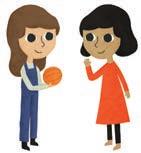
A computer program such as Microsoft Excel can help you to make a graph. A graph in Excel is called a chart. You are going to record the most popular girls’ names in 2016 on a chart. The information you need is in the table. Make a picture graph or column graph of the results.
Instructions for making a graph, using Microsoft Excel:
a Open a new spreadsheet page.
Top ten baby girls’ names in New Zealand 2016
Name Number of babies
b In Cell A1, type the first name (Olivia) and in B1, type the number of babies (266).
c Type the details for Charlotte in cells A2 and B2. Continue until you have written all 10 names and numbers.
d To use the data to make a chart (graph), hold Shift, click on Cell A1, then click on Cell B10. This will highlight all the information. Next we will tell the computer that you want to make a chart. (The following instructions may be different in some versions of Excel. You may need to ask your teacher if this is the case.)
e Click on Insert (at the top) and scroll down to the Chart menu item.
f Choose Column and the graph should appear on the screen.
g The graph should look similar to this:
2 Create a graph using Excel with information about baby names from this year or the year you were born. You could get the information by entering baby names government New Zealand into an internet search engine and choosing an appropriate site.
Survey question: What do you think of peas?
Responses: Table: Pictograph:



















How many people does each face on the picture graph represent?




















Guided practice
b Which response was the most popular?
c Which was the least popular?
d Do more people like or dislike peas overall?
e How many more people dislike peas a little than like them a little?
1 a Choose an appropriate way to display the data.
What do you think of action movies?
You can use the space below for your graph. You could also look back at page 105 to remind yourself how to use a computer program to display the data.
b What type of display did you choose?
c Why?
2 Use your graph to answer these questions.
a What was the most popular response?
b How many people were surveyed?
c How many people answered “Not sure”?
d Write two of your own statements about the data.
Average homework time per night for Year 5 students at Tui Primary School Do you think the
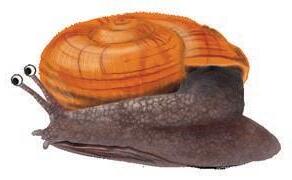
3 Write 3 questions that can be answered by the data.
4 Yes or no? Does the data tell you:
a how students feel about homework?
b how many students do more than 60 minutes of homework on average?
c who does the least homework?
d how many students responded to the question?
e the shortest average time spent on homework?
f the average age of the students?
g the group of people surveyed?
1 A survey was done about favourite chip brands. Two graphs were made from the same responses.
GRAPH 1 = 4 people
Crunchies
Crispies
Salties
Chompers














GRAPH 2 = 1 person
Crunchies
Crispies
Salties
Chompers

















































a Why do the results look different?
b Looking at the first graph, would you say Crispies are: a lot more popular? a bit more popular? not popular?
c Looking at the second graph, would you say Crispies are:
a lot more popular? a bit more popular? not popular?
d Which graph do you think the Crispies company would prefer people to see?
e Why?
f How many people were surveyed in total?
Unit 10: Topic 1 Chance
The chance of something happening can be shown as a fraction.
The spinner has a:
• 1 4 chance of landing on red.
• 1 4 chance of landing on blue.
• 2 4 (or 1 2 ) chance of landing on yellow.
We can say “one in four chance” instead of “one quarter chance”.

1 a List the possible outcomes of each spinner in the table below. b Write the probability of landing on each outcome as a fraction.
1 Colour the spinner to match the probabilities.
a 1 10 chance of landing on blue
b 5 10 chance of landing on red
c 2 10 chance of landing on green
d 2 10 chance of landing on yellow
2 Answer the questions about your spinner.
a Which colour are you most likely to land on?
b Which two colours do you have an equal chance of landing on?
c Which colour are you least likely to land on?
3 Write the probability of drawing each colour marble from the bag as a fraction.
a red marble
b yellow marble
c blue marble
d green marble

4 Write the colours from question 3 in order of least likely to most likely to be drawn from the bag.
Least likely Most likely
Flipping a coin is a fair way to make a decision because there is an equal chance of each outcome.
5 Are the possible outcomes fair or unfair?
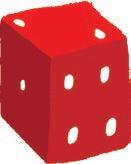


6 Class 5N were divided into two teams for a class game – Team Red and Team Blue. Each team was only allowed to have a turn in the game if the spinner landed on their colour.
Is this a fair or unfair way to play a game? Explain.
1 Write the possible outcomes of this spinner as a fraction and a decimal.
2 Frankie and Mia were playing a game with a spinner. When the spinner landed on blue or yellow, Frankie got a point. When the spinner landed on green, Mia got a point. Was this a fair way to play the game? Explain.
3 At the end of 20 spins, Frankie won the game. Should Frankie and Mia swap colours before playing another round of the game? Why or why not?
Every time I flip a coin there is an equal chance chance of getting heads or tails.
Does that mean if I flipped a coin 10 times I would get 5 heads and 5 tails?

1
How likely is it that you get heads?
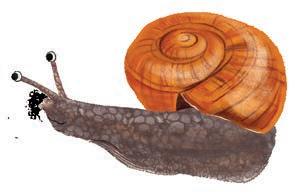
a Predict the result if you toss a coin 10 times.
Heads: Tails:
b Toss a coin 10 times. Record the results.
Toss
H or T?
c Compare your prediction with what actually happened. Explain the difference.
d Would you change your prediction before completing the experiment again? Why or why not?
1
a There are 4 ice blocks in a box – red, green, yellow and blue. Colour the ice blocks to show the 6 possible outcomes if you draw out 2 and the order is not important.
b You decide that the first to come out is yours and the second is for your friend. Show the possible outcomes if the order matters.
c How would you describe the likelihood of drawing out:
i red and blue?
ii yellow and green?
iii pink and blue?
2 List the possible outcomes if you roll 2 dice and the order matters.
3 Put the following counters in a bag.
• 13 green
• 8 blue
• 8 red
• 1 yellow
a Which colour are you most likely to draw out?
b Which colour are you very unlikely to draw out?
c Which 2 colours are you equally likely to draw out?
4 Conduct 20 trials with your counters, drawing out 1 each time. Replace the counters in the bag after you draw them out.
a Predict the results.
b Conduct the trials and tally the results.

Are your results what you expected?
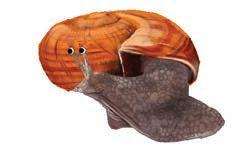
c Which colour did you draw out most?
d Which colour did you draw out least?
e Write 2 statements that show whether or not your results were as you expected.
f Compare your statements with a classmate’s statements. Do you agree or disagree with each other’s findings?
1
a If you were to draw out 2 counters at a time from the bag of c ounters in the last activity, what are the possible outcomes if the order is not important?
b List the possible outcomes across the top of the table. Conduct 20 trials drawing out 2 counters. Record the results, returning the counters to the bag after each trial.
Results
c Which outcome was most common?
d Which outcome was least common?
e Write 2 statements about your results.
f If you conducted another 20 trials, do you think the results would be the same? Why or why not?
acute angle An angle that is smaller than a right angle or 90 degrees.
addition The joining or adding of two numbers together to find the total. Also known as adding, plus and sum. See also vertical addition
3 and 2 is 5
algorithm A process or formula used to solve a problem in maths.
Examples: horizontal vertical algorithms algorithms TO 24 + 13 37 24 + 13 = 37
analog time Time shown on a clock or watch face with numbers and hands to indicate the hours and minutes.
angle The space between two lines or surfaces at the point where they meet, usually measured in degrees.
75-degree angle
anticlockwise Moving in the opposite direction to the hands of a clock.
area The size of an object’s surface.
Example: It takes 12 tiles to cover this poster.

area model A visual way of solving multiplication problems by constructing a rectangle with the same dimensions as the numbers you are multiplying and breaking the problem down by place value.
6 × 10 = 60
6 × 8 = 48 so
6 × 18 = 108
array An arrangement of items into even columns and rows to make them easier to count.
balance scale Equipment that balances items of equal mass; used to compare the mass of different items. Also called pan balance or equal arm balance
base The bottom edge of a 2D shape or the bottom face of a 3D shape.
capacity The amount that a container can hold.
Example: The jug has a capacity of 4 cups.


Cartesian plane A grid system with numbered horizontal and vertical axes that allow for exact locations to be described and found.
clockwise Moving in the same direction as the hands of a clock.
column graph A way of representing data using columns or bars to show the values of each variable.
categorical variables The different groups that objects or data can be sorted into based on common features.
Example: Within the category of ice cream flavours, variables include:



vanilla chocolate strawberry centimetre or cm A unit for measuring the length of smaller items.

Example: Length is 80 cm.
circumference The distance around the outside of a circle.
common denominator Denominators that are the same. To find a common denominator, you need to identify a multiple that two or more denominators share.
compensation method A way of solving a problem that involves rounding a number to make it easier to work with, and then paying back or “compensating” the same amount.
Example: 24 + 99 = 24 + 100 – 1 = 123
composite number A number that has more than two factors, that is, a number that is not a prime number.
cone A 3D shape with a circular base that tapers to a point.
coordinates A combination of numbers or numbers and letters that show location on a grid map.
corner The point where two edges of a shape meet. Also known as a
decimal fraction A way of writing a number that separates any whole numbers from fractional parts expressed as tenths, hundredths, thousandths and so on.
Example: 1.9 is the same as 1 whole and 9 parts out of 10 or 1 9 10
degrees Celsius A unit used to measure the temperature against the Celsius scale where 0°C is the freezing point and 100°C is the boiling point.

cross-section The surface or shape that results from making a straight cut through a 3D shape.
cube A rectangular prism where all six faces are squares of equal size.
cubic centimetre or cm3 A unit for measuring the volume of smaller shapes.
Example: This cube is exactly 1 cm long, 1 cm wide and 1 cm deep.
cylinder A 3D shape with two parallel circular bases and one curved surface.
data Information gathered through methods such as questioning, surveys or observation.
denominator The bottom number in a fraction, which shows how many pieces the whole or group has been divided into.
diameter A straight line from one side of a circle to the other, passing through the centre point.
digital time Time shown on a clock or watch face with numbers only to indicate the hours and minutes.

division/dividing The process of sharing a number or group into equal parts, with or without remainders.
dot plot A way of representing pieces of data using dots along a line labelled with variables.
Favourite pets cat dog rabbit
double/doubles Adding two identical numbers or multiplying a number by 2.
Example: 2 + 2 = 4 4 × 2 = 8
duration How long something lasts.
Example: Most movies have a duration of about 2 hours.
edge The side of a shape or the line where two faces of a shape meet.
edge
edge
equal Having the same number or value.
Example: Equal size Equal numbers
even number A number that can be divided equally into 2.
Example: 4 and 8 are even numbers
face The flat surface of a 3D shape.
face
factor A whole number that will divide evenly into another number.
Example: The factors of 10 are 1 and 10 2 and 5.
flip To turn a shape over horizontally or vertically. Also known as reflect. vertical flip horizontal flip
equation A written mathematical problem where both sides are equal.
Example: 4 + 5 = 6 + 3
equilateral triangle A triangle with three sides and angles the same size.
equivalent fractions Different fractions that represent the same size in relation to a whole or group. 1 2 2 4 3 6 4 8
estimate A thinking guess.
fraction An equal part of a whole or group.
Example: One out of two parts or 1 2 is shaded.
frequency The number of times a particular outcome occurs in a chance experiment.
function machine A machine that can be programmed to do the same thing to any number that is fed into it.
gram or g A unit for measuring the mass of smaller items. There are 1000 g in 1 kg.
graph A visual way to represent data or information.
invoice A written list of goods and services provided, including their cost and any GST.
GST or Goods and Services Tax
A tax, such as 15%, that applies to most goods and services bought in New Zealand.
Example: you pay: $10.00 + $1.50 = $11.50
hexagon A 2D shape with six sides.
horizontal Parallel with the horizon or going straight across.
horizontal line

improper fraction A fraction where the numerator is greater than the denominator, such as 3 2 .
integer A whole number. Integers can be positive or negative. –5 –4 –3 –2 –1 01234 5
inverse operations Operations that are the opposite or reverse of each other. Addition and subtraction are inverse operations.
Example: 6 + 7 = 13 can be reversed with 13 – 7 = 6
irregular shape A shape in which the sides are not all the same length and the angles are not all the same size.
isosceles triangle A triangle with two sides and two angles of the same size.
jump method A way to solve number problems that uses place value to “jump” along a number line by hundreds, tens and ones.
Example: 16 + 22 = 38
kilogram or kg A unit for measuring the mass of larger items.

kilometre or km A unit for measuring long distances or lengths.
kite A four-sided shape where two pairs of adjacent sides are the same length.
legend A key that tells you what the symbols on a map mean.

metre or m A unit for measuring the length or height of larger objects.



length The longest dimension of a shape or object.

Park Service station Campground Railway Road
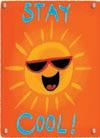
line graph A type of graph that joins plotted data with a line.
litre or L A unit for measuring the capacity of larger containers.
Example: The capacity of this bucket is 8 litres.

mass How heavy an object is.

Example: 4.5 kilograms 4.5 grams
method A way to solve a problem. In maths, you can often use more than one method to get the right answer.
Example: 32 + 27 = 59
Jump method
Split method 30 + 2 + 20 + 7 = 30 + 20 + 2 + 7 = 59
milligram or mg A unit for measuring the mass of lighter
items or to use when accuracy of measurements is important.

700 mg
millilitre or mL A unit for measuring the capacity of smaller containers.
1000 mL is 1 litre

millimetre or mm A unit for measuring the length of very small items or to use when accuracy of measurements is important.
There are 10 mm in 1 cm.
mixed number A number that contains both a whole number and a fraction.
Example: 2 3 4
multiple The result of multiplying a particular whole number by another whole number.
Example: 10, 15, 20 and 100 are all multiples of 5.
near doubles A way to add two nearly identical numbers by using known doubles facts.
obtuse angle An angle that is larger than a right angle or 90 degrees, but smaller than 180 degrees.
Example: 4 + 5 = 4 + 4 + 1 = 9
net A flat shape that when folded up makes a 3D shape.
number line A line on which numbers can be placed to show their order in our number system or to help with calculations.
octagon A 2D shape with eight sides. right angle
odd number A number that cannot be divided equally into 2.
Example: 5 and 9 are odd numbers.
operation A mathematical process. The four basic operations are addition, subtraction, multiplication and division.
number sentence A way to record calculations using numbers and mathematical symbols.
Example: 23 + 7 = 30
numeral A figure or symbol used to represent a number.
Examples: 1 – one 2 – two 3 – three
numerator The top number in a fraction, which shows how many pieces you are dealing with.
origin The point on a Cartesian plane where the x -axis and y -axis intersect.
origin
outcome The result of a chance experiment.
Example: The possible outcomes if you roll a dice are 1, 2, 3, 4, 5 or 6.
parallel lines Straight lines that are the same distance apart and so will never cross.
parallelparallelnot parallel
parallelogram A four-sided shape where each pair of opposite sides is parallel.
pattern A repeating design or sequence of numbers.
Example:
Shape pattern
Number pattern 2, 4, 6, 8, 10, 12
pentagon A 2D shape with five sides.
per cent or % A fraction out of 100.
Example: 62 100 or 62 out of 100 is also 62%.
perimeter The distance around the outside of a shape or area.
Example: Perimeter = 7 m + 5 m + 10 m + 3 m + 6 m = 31 m
picture graph A way of representing data using pictures so that it is easy to understand.
Example: Favourite juices in our class

place value The value of a digit depending on its place in a number.
MH Th T ThTh HTO
27 4 8 27 4 86 27 4 863 27 4 8631
polygon A closed 2D shape with three or more straight sides.
polygons not polygons
polyhedron (plural: polyhedra)
A 3D shape with flat faces.Not polyhedra polyhedra
polyhedra not polyhedra
power of The number of times a particular number is multiplied by itself.
Example: 4 3 is 4 to the power of 3 or 4 × 4 × 4.
prime number A number that has just two factors – 1 and itself. The first four prime numbers are 2, 3, 5 and 7.
prism A 3D shape with parallel bases of the same shape and rectangular side faces.
probability The chance or likelihood of a particular event or outcome occurring.
Example: There is a 1 in 8 chance this spinner will land on red.
protractor An instrument used to measure the size of angles in degrees.
pyramid A 3D shape with a 2D shape as a base and triangular faces meeting at a point.
reflect To turn a shape over horizontally or vertically. Also known as flipping. vertical reflection horizontal reflection
square pyramid hexagonal pyramid square pyramid hexagonal pyramid
quadrant A quarter of a circle or one of the four quarters on a Cartesian plane. quadrant
quadrant
quadrilateral Any 2D shape with four sides.
reflex angle An angle that is between 180 and 360 degrees in size.
regular shape A shape in which all the sides are the same length and all the angles are the same size. remainder An amount left over after dividing one number by another.
Example: 11 ÷ 5 = 2 r1
rhombus A 2D shape with four sides, all of the same length and opposite sides parallel.
right angle An angle of exactly 90 degrees.
radius The distance from the centre of a circle to its circumference or edge.
right-angled triangle A triangle where one angle is exactly 90 degrees.
rotate Turn around a point.
rotational symmetry A shape has rotational symmetry if it fits into its own outline at least once while being turned around a fixed centre point.
semi-circle Half a circle, bounded by an arc and a diameter line.
round/rounding To change a number to another number that is close to it to make it easier to work with.
229 can be rounded up to OR the nearest 10 230
rounded down to the nearest 100 200
scale A way to represent large areas on maps by using ratios of smaller to larger measurements.
Example: 1 cm = 5 m
scalene triangle A triangle where no sides are the same length and no angles are equal.
sector A section of a circle bounded by two radius lines and an arc.
skip counting Counting forwards or backwards by the same number each time.
Examples:
Skip counting by fives: 5, 10, 15, 20, 25, 30
Skip counting by twos: 1, 3, 5, 7, 9, 11, 13
slide To move a shape to a new position without flipping or turning it. Also known as translate
sphere A 3D shape that is perfectly round.
split method A way to solve number problems that involves splitting numbers up using place value to make them easier to work with.
Example: 21 + 14 = 20 + 10 + 1 + 4 = 35
square centimetre or cm2
A unit for measuring the area of smaller shapes. It is exactly 1 cm long and 1 cm wide.
square metre or m2
A unit for measuring the area of larger spaces. It is exactly 1 m long and 1 m wide.
square number
The result of a number being multiplied by itself. The product can be represented as a square array.
Example: 3 × 3 or 32 = 9
straight angle An angle that is exactly 180 degrees in size. 180º
subtraction The taking away of one number from another number. Also known as subtracting, take away, difference between and minus.
See also vertical subtraction.
Example: 5 take away 2 is 3
survey A way of collecting data or information by asking questions.
Strongly agree Agree Disagree Strongly disagree
symmetry A shape or pattern has symmetry when one side is a mirror image of the other.
table A way to organise information that uses columns and rows.
tally marks A way of keeping count that uses single lines with every fifth line crossed to make a group.
term A number in a series or pattern. Example: The sixth term in this pattern is 18.
tessellation A pattern formed by shapes that fit together without any gaps.

thermometer An instrument for measuring temperature.
three-dimensional or 3D
A shape that has three dimensions – length, width and depth. 3D shapes are not flat. length
timeline A visual representation of a period of time with significant events marked in.
translate To move a shape to a new position without flipping or turning it. Also known as slide.
value How much something is worth.
Example: This coin is This coin is worth 10c. worth $1.
trapezium A 2D shape with four sides and only one set of parallel lines.
triangular number A number that can be organised into a triangular shape. The first four are:
vertex (plural: vertices) The point where two edges of a shape meet. Also known as a corner. corner
vertical At a right angle to the horizon or straight up and down
two-dimensional or 2D A flat shape that has two dimensions –length and width.
vertical line turn Rotate around a point.
unequal Not having the same size or value.
Example: Unequal Unequal size numbers Unequal sizeUnequal numbers

vertical addition A way of recording addition so that the place value columns are lined up vertically to make calculation easier.
vertical subtraction A way of recording subtraction so that the place value columns are lined up vertically to make calculation easier.
volume How much space a shape takes up.
Example: This shape has a volume of 4 cubes.
whole All of an item or group.
Example: A whole A whole shape group
A whole shapeA whole group width The shortest dimension of a shape. Also known as breadth
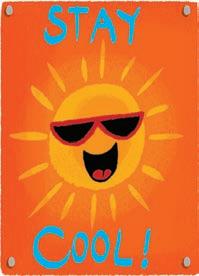
x-axis The horizontal reference line showing coordinates or values on a graph or map.
of people
y -axis The vertical reference line showing coordinates or values on a graph or map.
4 a fifty-six thousand, nine hundred and t wenty-seven
b eighty thousand, four hundred and one
c one hundred and forty-two thousand and fifty-eight
b 13 428 + 32 517
= (8 + 20 + 400 + 3000 + 10 000) + (7 + 10 + 500 + 2000 + 30 000)
= 8 + 7 + 20 + 10 + 400 + 500 + 3000 + 2000 + 10 000 + 30 000
= 15 + 3 0 + 900 + 5000 + 40 000
= 45 9 45
c 25 019 + 28 746
= (9 + 10 + 0 + 5000 + 20 000) + (6 + 40 + 700 + 8000 + 20 000)
= 9 + 6 + 10 + 4 0 + 0 + 700 + 5000 + 8000 + 20 000 + 20 000
= 15 + 50 + 700 + 13 000 + 40 000
= 53 765
d 44 754 + 35 632
= (4 + 5 0 + 700 + 4000 + 40 000)
+ (2 + 30 + 600 + 5000 + 30 000)
= 4 + 2 + 50 + 3 0 + 700 + 600 + 4000 + 5000 + 40 000 + 30 0000
= 6 + 80 + 1300 + 9000 + 70 000
= 80 3 86
Guided practice
1 a 62 b 95 c 782
2 a 167 b 719 c 8914
3 a 8 497 b 63 59 c 16 699
Independent practice 1 a b Th HTO 6371 9 + 2115
Guided practice
1 a 6359 – 4000 – 200 − 40 – 3 = 2116
b 89 46 – 3000 – 400 − 10 – 2 = 5 534
c 76 50 – 2000 – 500 − 10 – 7 = 513 3
d 15 4 98 – 4000 – 0 − 50 – 7 = 11 4 41
e 28 575 – 10 000 – 4000 − 300 – 20 – 4 = 14 251
Independent practice
1
a 75 98 – 3471 = 7598 – 3000 = 4598 – 400 = 4198 – 70 = 4128 – 1 = 4127
b 15 5 37 – 13 116 = 15 537 – 10 000 = 5537 – 3000 = 2537 – 100 = 2437
– 10 = 2427
– 6 = 2421
c 58 9 26 – 32 604 = 58 926 – 30 000 = 28 926 – 2000 = 26 926 – 600 = 26 326 – 4 = 26 322
d 94 5 89 – 62 319 = 94 589 – 60 000 = 34 589 – 2000 = 32 589 – 300 = 32 289 – 10 = 32 279 – 9 = 32 270
Guided practice
Independent practice
NOTE: Students may or may not include the zeroes at the start of some answers. Either way is acceptable at this point.
Independent practice
1 a & d
b 6, 2, 8, 4, 0
c 1 × 6 = 6 2 × 6 = 12
3 × 6 = 18 4 × 6 = 24
5 × 6 = 30 6 × 6 = 36
7 × 6 = 42 8 × 6 = 48
9 × 6 = 54 10 × 6 = 6 0
e 9, 8 , 7, 6, 5, 4, 3, 2, 1, 0
f 1 × 9 = 9 2 × 9 = 18
3 × 9 = 27 4 × 9 = 36
5 × 9 = 45 6 × 9 = 54
7 × 9 = 63 8 × 9 = 72
9 × 9 = 81 10 × 9 = 9 0
g 99, 108, 117 h 66, 72, 78
2 a 1 × 4 = 4 2 × 4 = 8
3 × 4 = 12 4 × 4 = 16
5 × 4 = 20 6 × 4 = 24
7 × 4 = 28 8 × 4 = 32
9 × 4 = 36 10 × 4 = 4 0
b 4 × 2 = 2 × 4 4 × 3 = 3 × 4
4 × 4 = 4 × 4 4 × 5 = 5 × 4
4 × 6 = 6 × 4 4 × 7 = 7 × 4
4 × 8 = 8 × 4 4 × 9 = 9 × 4
4 × 10 = 10 × 4
c 4 ÷ 4 = 1 4 ÷ 1 = 4
8 ÷ 4 = 2 8 ÷ 2 = 4
12 ÷ 4 = 3 12 ÷ 3 = 4
16 ÷ 4 = 4 20 ÷ 4 = 5
20 ÷ 5 = 4 24 ÷ 4 = 6
24 ÷ 6 = 4 28 ÷ 4 = 7
28 ÷ 7 = 4 32 ÷ 4 = 8
32 ÷ 8 = 4 36 ÷ 4 = 9
36 ÷ 9 = 4 40 ÷ 4 = 10
4 0 ÷ 10 = 4
3 a 18 0, 1800 b 24 0, 2400 c 420, 4200
Extended practice
1 a 36 b 36 0 c 63 d 153
2 Teacher to check. This could become a small or large group activity, with the arrays used for a class display.
3 a 7, 9 b 4, 6
4 Teacher to check a Look for students who recognise that the numbers appearing are multiples of 2.
b The answer doubles every time the = symbol is pressed.
Guided practice
Guided practice 1
Guided practice
1 a 11 b 21 c 34 d 23 e 23 f 31
2 a 15 b 14 c 12 d 18 e 13 f 23
Independent practice
2 a 72 ÷ 6 = 12 b 80 ÷ 5 = 16 c 76 ÷ 4 = 19 d 68 ÷ 4 = 17 e 98 ÷ 7 = 14 f 81 ÷ 3 = 27
3 a 12 r 1 b 9 r 3 c
r 2 d 15 r 2
4 a 28 b 19 c 24 d 32 e 13 f No.
Teacher: Look for students who understand that there would be leftover or remainders because 7 does not divide equally into 78.
Extended practice
a
4 . The shape should be divided into four parts and one part should be shaded.
b 1 2 . The shape should be divided into two parts and one part should be shaded.
Extended practice
1 a 10 squares should be coloured in: 10
practice 1
Guided practice
1
a 20 squares should be coloured in. 0.2
b 50 squares should be coloured in. 0.5
c 80 squares should be coloured in. 0.8
2
a 45 squares should be coloured in. 0.45
b 26 squares should be coloured in. 0.26
c 53 squares should be coloured in. 0.53
3
1
2 a –d Teacher to check. Look for the ability to accurately add 3 money amounts using a vertical algorithm, and then apply understanding of rounding and change giving to accurately identify the rounded amount and calculate the change required.
3 a $ 2, $2, $1, 50c
b $2, $2, $1, 20c, 20c, 10c
$29.66 + $9.45$30 + 9 $39
$14.32 + $9.98$14 + $10 $24
$24.87 + $8.23$25 + $8 $33
5 a Actual total: $39.11, Change: $10.90
b Actual total: $24.30, Change: $5.70
c Actual total: $33.10, Change: $6.90
6 Teacher to check. Answers will vary depending on which items the students choose.
Extended practice
1 a B and E b A and D
c B and C d D and F
e C and E
2 $18 , $18.01, $18.02, $18.03, $18.04, $17.99, $17.98, $17.97, $17.96, $17.95
3 $142.10
4 Answers may vary, but if students rounded the cents to the nearest 10c then the estimate and actual cost are the same.
Guided practice
1 a 25, add 2 b 0, subtract 11
c 23, subtract 3
d 10 3, add 10 e 90, add 9
Independent practice
1 a multiply by 7 b subtract 9
c add 20 d multiply by 10
2 a 4 6, 100, 109 b 8, 100, 16
3 a, b & d
123456789 10
11 12 13 14 15 16 17 1819 20
21 2223 24 25 26 27 28 29 30
31 32 33 34 35 36 37 38 39 40
41 42 43 44 45 46 47 48 49 50
51 52 53 54 55 56 57 58 59 60
61 62 63 64 65 66 67 68 69 70
b 1248 16 32 64 128 256 512
Rule: Multiply the previous number by 2; Double
2 Teacher to check. Look for the ability to apply knowledge of number patterns to create an appropriate rule and formulate 3 examples that demonstrate that rule.
3 10 c an be divided into more groups than 7.
4 a 7, 14, 21, 28, 35, 42, 49, 56, 63, 70
b 14, 28, 42, 56, 70
c Teacher: Students may list the individual numbers or observe that all the multiples of 4 are both circled and shaded.
e All of them.
4 a & b
123456789 10
11 12 13 14 15 16 17 1819 20
21 2223 24 25 26 27 28 29 30
31 32 33 34 35 36 37 38 39 40
41 42 43 44 45 46 47 48 49 50
51 52 53
c They all end in zero.
d The numbers that are multiples of both 2 and 5 are also multiples of 10.
5 a 1, 2, 3 and 6. b 1 and 7 c 1, 2, 4 and 8.
6 Each number has a factor of 1 and itself.
7 Each number has two factors (1 and 3, 1 and 5) because they are odd numbers and cannot be divided evenly into any other groups.
8 Factors of 20: 1, 2, 4, 5, 10, 20 Factors of 50: 1, 2 , 5, 10, 25, 50 Factors of 100: 1, 2, 4, 5, 10, 20, 25, 50, 100
Extended practice
1 Teacher: Accept any answer that accurately describes the patterns.
a
359 15 23 33 45 59 75 93
Rule: Add 2 more each time
c 35, 70
d 21, 42, 63
Guided practice
1 a true b true
c false d false
e true f true g false h false
2 a If you change the order of numbers in addition and multiplication number sentences, the answer stays the same.
b If you change the order of numbers in subtraction and division number sentences, the answer does not stay the same.
Independent practice
1 a 4 + 5 = 9 5 + 4 = 9
b 4 × 5 = 20 5 × 4 = 20
c 16 + 9 = 25 9 + 16 = 25
d 10 × 5 = 5 0 5 × 10 = 50
e 12 + 21 = 33 21 + 12 = 33
f 4 × 6 = 24 6 × 4 = 24
g 10 0 + 13 = 113 13 + 100 = 113 h 3 × 10 0 = 300 100 × 3 = 300
2 Answers may vary.
a 21 + 9 b 4 × 11
c 13 + 7 d 8 × 10
e 110 + 18 f 12 × 100
g 34 3 + 7 h 4 × 25 0
b 20 0 + 13 + 200 = ?
20 0 + 200 + 13 = 413
c 10 × 2 × 3 = ? 2 × 3 × 10 = 6 0
d 25 × 3 × 4 = ?
3 × 4 × 25 = 3 00
5 a
10 + 2 = 12 12 – 2 = 10
34 + 16 = 50 50 – 16 = 34
8 + 11 = 19 19 – 8 = 11 102 + 38 = 140140 – 38 = 102
b Multiplication Division
3 × 5 = 1515 ÷ 5 = 3
4 × 6 = 2424 ÷ 6 = 4
10 × 9 = 9090 ÷ 10 = 9
12 × 8 = 9696 ÷ 12 = 8
6 a true b true
c false d false
e true f false
7 a 10 0 + 10 + 1 = 111
b 5 × 5 × 5 = 125
c 45 – 3 + 12 = 54
d 470 + 53 – 20 = 503
e 2 × 9 + 18 = 3 6
f 6 ÷ 3 + 8 = 10
Extended practice
1 a 4 × 8 + 13 = 4 5
b 24 + 4 4 – 13 = 55
c 6 × 10 × 2 = 120
d (3 0 − 10) ÷ 5 = 4
2 a –d Teacher to check. Answers will vary.
Guided practice
1 a 15 + 21 = 48 – 12, Answer: 21
b 42 + 16 = 31 + 27, Answer: 16
c Number sentence: 73 – 24 = 26 + 23, Answer: 24
Independent practice
1 a 100 – 42 = 31 + 27
b 56 + 31 = 108 – 21
3 It is easier to add a small number to a big number and it is easier to multiply a small number by a big number. 4 a 61 + 4 + 9 = ? 61 + 9 + 4 = 74
c 98 + 3 0 = 200 – 72
d 43 + 5 4 = 72 + 25
e 97 – 18 = 61 + 18
2 a 15 b 14 c 84 d 54
e 6 f 8 g 7 h 55
i 40 j 13 k 36 l 65
3 Teacher: The most likely responses are below; however, accept any response that shows an understanding of what the question requires.
a 12 × 6 = 72 b 8 × 9 = 72
c 15 × 6 = 9 0 d 49 ÷ 7 = 7
e 54 ÷ 6 = 9
f (28 + 32) × 10 = 600
4 a & b Teacher to check. Look for students who demonstrate an understanding of the relationship between word problems and number sentences by being able to write scenarios that fit the given equations.
Extended practice
1 Teacher: There are multiple answers possible – e.g. 40 green, 40 red and 26 blue; 100 green, 3 red and 3 blue; or 35 green, 35 red and 36 blue. Look for the ability to correctly interpret the problem and find combinations that total 106.
2 Possible answers are: 1 each for 48 people, 2 each for 24 people, 3 each for 16 people, 4 each for 12 people, 6 each for 8 people, 8 each for 6 people, 12 each for 4 people, 16 each for 3 people. Teacher: Look for the ability to correctly interpret the problem and find multiple solutions.
3 Teacher to check. There are multiple answers possible. Look for students who are able to correctly interpret the requirements of the problem and who show fluency in exploring a range of answers.
Guided practice
1 Teacher: The answers below are the most likely ones. Accept alternatives if students can offer adequate justification – e.g. “I would measure the safety pin in centimetres using decimals.”
a cm b m c cm
d mm e m f mm
2 a 1 m ruler
b 30 m measuring tape
c 15 cm ruler
d 15 cm ruler
e 30 m measuring tape
f 15 cm ruler
3
Guided practice 1

Independent practice
1 a cm2 b m2 c cm2 d m2
2 Teacher to check. Look for students who demonstrate fluency with the concept of area by being able to draw 4 different shapes with the same area.
1 a 8 mm b 25 mm
c 43 mm d 37 mm
2 a 17 mm or 1 cm and 7 mm
b 6 mm
c 68 mm or 6 cm and 8 mm
3 Teacher to check. Approximate answers have been given.
a 6 cm b 3 cm c 4 cm
4 Teacher to check. Look for the ability to provide an appropriate rationale for answers using the language of length.
5 a 20 cm b 18 cm
c 20 cm d 23 cm
6 Teacher: Due to the small size of the unit, allow for slight variations in results.
a 80 mm b 75 mm
c 178 mm
d 120 mm
1 a–e Teacher to check. Look for students who can match appropriate units of measurement to the items they choose, and who demonstrate an understanding of length by making reasonable estimates and by accurately measuring each item.
f– k Teacher to check. Look for students who show fluency with calculating the difference between lengths using the same units and who can convert units to find the difference between the lengths of their shortest and longest items.
3 a 24 cm2 b 18 cm2
c 16 cm2 d 15 cm2
4 Teacher to check. Look for students’ ability to choose areas for which square metres are an appropriate unit of measurement, and to make a reasonable calculation of chosen areas. Students may also like to justify the reasoning for their estimates.
Extended practice
1 a 16 cm2
b 8 cm2 × 2 cm2 = 16 cm2
c 4 cm2 × 10 cm2 = 40 cm2
d 3 cm2 × 5 cm2 = 15 cm2
2 a–b Teacher to check. Look for students who demonstrate an understanding of the concept of area by being able to draw shapes that meet the given specifications.
Guided practice
1 a 6 cm3 b 12 cm3 c 16 cm3
2 c
3 a –c Teacher to check. Look for students who can accurately mark the correct level on the scale and who can interpret both litre and millilitre measurements.
4 b
Independent practice
1 a Teacher to check. Look for the ability to demonstrate an understanding of the properties of a cube and accurately represent the model.
b 2 c 4
2 a Teacher to check. Look for the ability to demonstrate an understanding of the properties of a cube and accurately represent the model.
b 3 c 9
3 a –c Teacher to check. Look for the ability to make a rectangular prism with the same number of cubic centimetres in each layer. For example, 2 layers of 12 cm3 , 3 layers of 8 cm3 , 4 layers of 6 cm3 etc.








1 a–j Teacher to check. Look for the ability to make reasonable estimates as to the masses of familiar objects and show fluency with recording and calculating with masses.






3 Teacher: Accept equivalents – e.g.
practice
Extended practice
1 C, D, A, E, B
2 a 1 litre 400 millilitres
b 2 litres 500 millilitres
c 3 litres 859 millilitres
d 7 litres 643 millilitres
3
Extended practice
f– g Answers will vary depending on the students’ location. Likely answers are:
f 7° C and 10°C
g 35°C, 36°C and 49°C
3 The following pictures should be circled:
a Snow scene
b Glass of water
c Cupcake
d Person in shade
4 The most likely answers are:
a warm or hot b icy
c warm or hot d cold or cool
Guided
1
1
Teacher: Answers may vary depending on students’ perceptions. This can be used as the basis for a discussion on how a particular temperature may be considered hot in one context, but warm in another.

2 a–f Teacher to check. Look for the ability to accurately measure and record temperature and understand how thermometers are used to compare the temperature of places.
Guided practice
1 a 60 b 60 c 24 d 7 e 365 (or 366) f 52
2 a 120 b 360 c 180 d 300 e
Extended practice
1 a 11:30 am b 16 minutes
c 9 hours 35 minutes
d My Mum the Plumber
e 3:01 pm f Cop Capers
g Cakes on a Train
h Start Finish
Guided practice
1 Teacher: Students may draw different versions of certain shapes – e.g. an irregular pentagon rather than a regular one. This is acceptable if they show the correct properties for the shapes. Alternative names for shapes are also acceptable – e.g. “quadrilateral” for kite. Shape
Sides Angles Polygon
2 square, pentagon, rhombus. Teacher to check drawings.
Parallelogram 48 cm2 b C; hexagon
Area of shape halved
Area of shape doubled
Extended practice
1 a & b Teacher to check. The most likely answer is a 3 cm by 3 cm square. Look for the ability to demonstrate an understanding of the properties of regular shapes and accurately identify the shape drawn.
c 16 cm2 d irregular e
Independent practice
1 a–d Teacher to check. Look for the ability to draw the shapes with a reasonable degree of accuracy and an understanding of the properties of the 3D shapes, such as the base shapes.

2 a-c Answers will vary depending on the polygons students draw. Teacher to check. (The diamond in question 2b has 4 angles and an area of 32 cm2.)
1 a
7 a Students should draw a square.
b Students should draw a square.
c Students should draw a circle.
d Students should draw a hexagon.
Extended practice
1
2 rectangular bases
8 corners
12 edges rectangular prism
1 triangular base
4 corners
6 edges
2 hexagonal bases
12 corners 18 edges hexagonal prism
2 Teacher to check. Look for students’ ability to make a reasonable representation of their two shapes and accurately draw front, top and side views. Description
1 a smaller than a right angle; acute angle
b greater than a straight angle; reflex angle
c smaller than a revolution; obtuse angle
d greater than a right angle; straight angle
e greater than a straight angle; revolution
f smaller than a revolution; right angle
Independent practice 1

2 a & b Teacher to check. Look for the ability to accurately identify, classify and represent angles in the environment.
3 B C E F A D
4
a 1 right angle 2 acute angle
3 acute angle
b 1 obtuse angle
acute angle
c 1 right angle 2 acute angle
3 reflex angle 4 acute angle
d 1 acute angle 2 acute angle
e 1 reflex angle 2 acute angle
3 acute angle
f 1 obtuse angle 2 reflex angle
3 right angle 4 obtuse angle
5 acute angle 6 obtuse angle
Extended practice
1 a–c Teacher to check. Look for the ability to visualise the invisible angle arm and draw it to meet the angle criteria.
2 Teacher to check. Look for the ability to demonstrate an understanding of the concept of invisible angle arms, and apply understanding of angle types to real-life situations.
Guided practice
1 a 24 metres b 4
c In between the horse pavilion and the animal nursery
d 115 metres
2 a Teacher to check. Look for students who understand that 1 cm = 10 m and therefore draw a 1 cm by 1.5 cm area.
b Teacher to check based on location of students’ picnic area.
c –e Teacher to check. Look for the ability to understand that a symbol on a legend needs to represent the place on the map in some way, and to use the language of location to accurately describe where the police station is.
Independent practice
5 a 1150 m or 1.15 km
b & c Teacher to check. Look for the ability to write accurate descriptions of directions using the language of location.
6 a water station b Bow River c Start and/or Information
7 a I2 b L4 c C5
8 Teacher to check. Look for the ability to correctly label the compass with south, east and west.
Extended practice
1 a Shark Alley
b Coconut Island
c Castaway Island
d Shipwreck Cliffs (or Skull Island)
2 a –e Teacher to check. Look for the ability to accurately interpret maps using both grid references and compass directions, and to show an awareness of why one route may be a better choice than another. Ensure students correctly added SE and NW to the compass.
Guided practice
1 a & b Teacher to check. Look for students who can write a yes/ no question on the topic, and who can accurately record the responses.
2 a Teacher to check. Look for the ability to understand the difference between open and closed questions.
4
a What do you like most about your job?
b & c Teacher to check that students have written a reasonable survey question which would result in less possible responses.
5 By only specifying three months and then collating the rest into the “other” group, Jamie has restricted his ability to be able to determine the birth month of those who answered “other” and so is unable to determine which month has the most birthdays. To fix this, he could change his survey question to “Which month were you born in?”.
6 a
1 a–d Teacher to check. Look for the ability to apply understanding of scale to draw places of appropriate dimensions – e.g. the paddock should be 6 cm long and 4 cm wide.
2 a –e Teacher to check. Look for the ability to show an understanding of how to use symbols to represent places on maps, and justify why items are placed in particular locations.
3 Teacher to check track. Width of the farm is 65 metres.
4 a 3 cm long and 2 cm wide b 1 cm long and 0.5 cm wide c 1.5 cm wide and 2 cm long
b Teacher to check. Look for the ability to accurately record 2 responses to the question.
Independent practice
1 a Do you like chocolate?
b What is your favourite ice cream flavour?
2 a Teacher to check. Look for the ability to understand that the question can only have limited responses.
b –e Teacher to check. Look for the ability to justify predictions about the survey outcome and accurately record the results using numbers, names, ticks or tally marks.
f Teachers to allow students time to discuss their results.
7 a –c Teacher to check. Look for students’ ability to use observation as a data collection method and accurately represent their data in a table and matching column graph. Students should be able to label the x - and y -axes, and graph the data.
practice
1 & 2 Practical activity. Teachers could choose to model a similar activity first or to have students work in small groups.
Guided practice
1 a
d & e Teacher to check. Look for students’ ability to use their knowledge of data representation to suggest a plausible reason why one display would be chosen over the other – e.g. Graph 2 makes Crispies look more popular than Graph 1 because of the scale used. f 48
Guided practice
1
b Dislike a little c Don’t know d Dislike e 14
Independent practice
1 a Teacher to check. Look for the ability to choose a display method that allows accurate representation of the data – e.g. a column or picture graph. Students should include all the relevant elements, such as titles and scales.
b & c Teacher to check. Look for the ability to correctly identify the type of graph used and justify the choice – e.g. a column graph because none of the categorical values are very high and it was easy to make the scale.
2 a Like a lot b 27 c 3 d Teacher to check. Look for the ability to accurately interpret the data to write an original statement.
3 Teacher to check. Look for students’ ability to demonstrate an understanding of data interpretation by writing questions that can be answered by the given information.
4 a No b Yes c No d Yes e Yes f No g Yes
Extended practice
6 This is a fair way to play the game because each team has the same chance of being selected.
Extended practice
1
2
1 a Because the scale is different. b a bit more popular Teacher: Accept the answer “a lot more popular” if students can justify this – e.g. by explaining that they used the scale to draw the conclusion.
c a lot more popular
Teacher: Accept the answer “a bit more popular” if students can justify this – e.g. by quantifying how many more people prefer Crispies.
2 Yes, this is a fair way to play the game because there is an equal chance of the spinner landing on green or blue and yellow.
3 No, they do not need to swap because it was a fair game.
Guided practice
1 Teacher to check. Answers will vary depending on the results students achieved when tossing the coin.
Independent practice
1 a red and green, red and yellow, red and blue, green and yellow, green and blue, yellow and blue b red and green, green and red, red and yellow, yellow and red, red and blue, blue and red, green and yellow, yellow and green, green and blue, blue and green, blue and yellow, yellow and blue c Teacher to check. Look for students who can select appropriate language to describe the probabilities and who can offer reasonable explanations as to why the chances of choosing red and blue, or yellow and green, can be described as “unlikely” or even “highly unlikely”, and that the chance of choosing pink and blue is impossible.
2 Teacher to check. These outcomes are possible: 6 and 6, 6 and 5, 5 and 6, 6 and 4, 4 and 6, 6 and 3, 3 and 6, 6 and 2, 2 and 6, 6 and 1, 1 and 6, 5 and 5, 5 and 4, 4 and 5, 5 and 3, 3 and 5, 5 and 2, 2 and 5, 5 and 1, 1 and 5, 4 and 4, 4 and 3, 3 and 4, 4 and 2, 2 and 4, 4 and 1, 1 and 4, 3 and 3, 3 and 2, 2 and 3, 3 and 1, 1 and 3, 2 and 2, 2 and 1, 1 and 2, 1 and 1.
3 a green b yellow c red and blue
4 a & b Teacher to check. Look for the ability to accurately predict and record the results of 10 trials using an efficient data method such as tally marks.
c & d Teacher to check. Look for students whose response matches the data collected in parts a and b.
e & f Teacher to check. Look for the ability to offer a reasonable explanation for the results – e.g. if the numbers were the same, students may point out that there was an equal chance of drawing out the colours because there was the same number of each in the bag. If the results were different, they may discuss the fact that chance plays a role in the results and they will therefore vary from predictions.
1 a 2 green, 2 red, 2 blue, 1 green and 1 yellow, 1 green and 1 blue, 1 green and 1 red, 1 red and 1 blue, 1 red and 1 yellow, 1 blue and 1 yellow
b Teacher to check. Look for students’ ability to accurately record the results of their 20 trials using an appropriate method.
c –e Teacher to check. Look for students’ ability to accurately interpret their experiment results and use the language of chance and mathematical reasoning to make statements that reflect their data.
f Teacher to check. Look for students who demonstrate an understanding of the fact that, although you can predict the likelihood of certain outcomes of the experiment, the actual outcomes will vary because chance plays a part.
Oxford University Press is a department of the University of Oxford. It furthers the University’s objective of excellence in research, scholarship and education by publishing worldwide. Oxford is a registered trademark of Oxford University Press in the UK and in certain other countries.
Published in Australia by Oxford University Press
Level 8, 737 Bourke Street, Docklands, Victoria 3008, Australia
© Oxford University Press 2025
The moral rights of the author have been asserted.
First published 2025
First edition
All rights reserved. No part of this publication may be reproduced, stored in a retrieval system, transmitted, used for text and data mining, or used for training artificial intelligence, in any form or by any means, without the prior permission in writing of Oxford University Press, or as expressly permitted by law, by licence, or under terms agreed with the reprographics rights organisation. Enquiries concerning reproduction outside the scope of the above should be sent to the Rights Department, Oxford University Press, at the address above.
You must not circulate this work in any other form and you must impose this same condition on any acquirer.
ISBN 9780190351038
Reproduction and communication for educational purposes
The New Zealand Copyright Act 1994 (the Act) allows educational institutions that are covered by remuneration arrangements with Copyright Licensing New Zealand to reproduce and communicate certain material for educational purposes. For more information, see copyright.co.nz.
Illustrated by Maxime Lebrun and Daniel Rieley
Typeset by Newgen KnowledgeWorks Pvt. Ltd., Chennai, India
Proofread by Fiona Olney-Fraser
Printed in New Zealand by Webstar
Oxford University Press Australia & New Zealand is committed to sourcing paper responsibly.
Disclaimer
Links to third party websites are provided by Oxford in good faith and for information only. Oxford disclaims any responsibility for the materials contained in any third party website referenced in this work.
Acknowledgements
Cover: Rob Suisted, Nature’s Pic Images; Zhuna/Shutterstock, p.43, p.45 (bank notes); Shysheep/Shutterstock, p.60 (fern).
Internal illustrations of the cover animal copyright © Katherine Quinn 2025